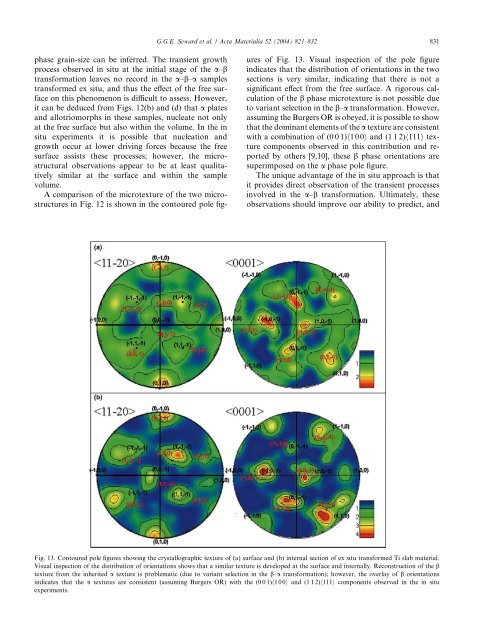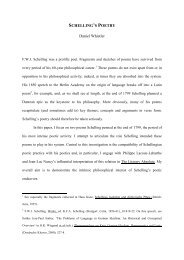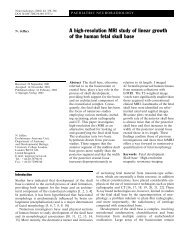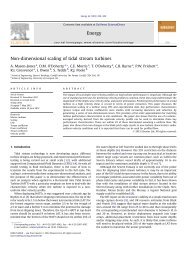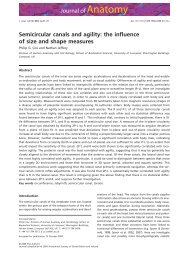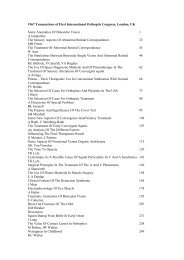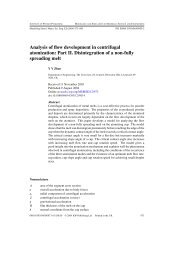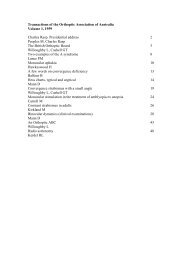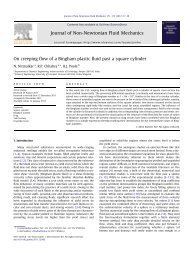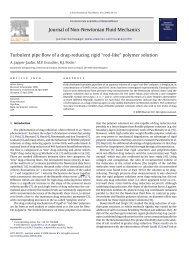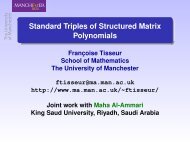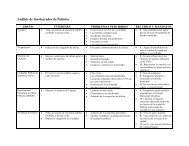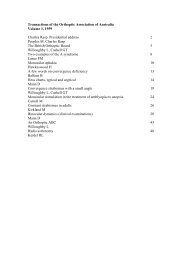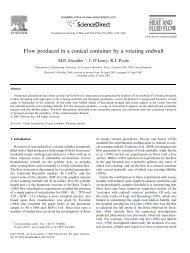In situ SEM-EBSD observations of the hcp to bcc phase ...
In situ SEM-EBSD observations of the hcp to bcc phase ...
In situ SEM-EBSD observations of the hcp to bcc phase ...
You also want an ePaper? Increase the reach of your titles
YUMPU automatically turns print PDFs into web optimized ePapers that Google loves.
G.G.E. Seward et al. / Acta Materialia 52 (2004) 821–832 831<strong>phase</strong> grain-size can be inferred. The transient growthprocess observed in <strong>situ</strong> at <strong>the</strong> initial stage <strong>of</strong> <strong>the</strong> a–btransformation leaves no record in <strong>the</strong> a–b–a samplestransformed ex <strong>situ</strong>, and thus <strong>the</strong> effect <strong>of</strong> <strong>the</strong> free surfaceon this phenomenon is difficult <strong>to</strong> assess. However,it can be deduced from Figs. 12(b) and (d) that a platesand allotriomorphs in <strong>the</strong>se samples, nucleate not onlyat <strong>the</strong> free surface but also within <strong>the</strong> volume. <strong>In</strong> <strong>the</strong> in<strong>situ</strong> experiments it is possible that nucleation andgrowth occur at lower driving forces because <strong>the</strong> freesurface assists <strong>the</strong>se processes; however, <strong>the</strong> microstructural<strong>observations</strong> appear <strong>to</strong> be at least qualitativelysimilar at <strong>the</strong> surface and within <strong>the</strong> samplevolume.A comparison <strong>of</strong> <strong>the</strong> microtexture <strong>of</strong> <strong>the</strong> two microstructuresin Fig. 12 is shown in <strong>the</strong> con<strong>to</strong>ured pole figures<strong>of</strong> Fig. 13. Visual inspection <strong>of</strong> <strong>the</strong> pole figureindicates that <strong>the</strong> distribution <strong>of</strong> orientations in <strong>the</strong> twosections is very similar, indicating that <strong>the</strong>re is not asignificant effect from <strong>the</strong> free surface. A rigorous calculation<strong>of</strong> <strong>the</strong> b <strong>phase</strong> microtexture is not possible due<strong>to</strong> variant selection in <strong>the</strong> b–a transformation. However,assuming <strong>the</strong> Burgers OR is obeyed, it is possible <strong>to</strong> showthat <strong>the</strong> dominant elements <strong>of</strong> <strong>the</strong> a texture are consistentwith a combination <strong>of</strong> (0 0 1)h100i and (1 1 2)h111i texturecomponents observed in this contribution and reportedby o<strong>the</strong>rs [9,10], <strong>the</strong>se b <strong>phase</strong> orientations aresuperimposed on <strong>the</strong> a <strong>phase</strong> pole figure.The unique advantage <strong>of</strong> <strong>the</strong> in <strong>situ</strong> approach is thatit provides direct observation <strong>of</strong> <strong>the</strong> transient processesinvolved in <strong>the</strong> a–b transformation. Ultimately, <strong>the</strong>se<strong>observations</strong> should improve our ability <strong>to</strong> predict, andFig. 13. Con<strong>to</strong>ured pole figures showing <strong>the</strong> crystallographic texture <strong>of</strong> (a) surface and (b) internal section <strong>of</strong> ex <strong>situ</strong> transformed Ti slab material.Visual inspection <strong>of</strong> <strong>the</strong> distribution <strong>of</strong> orientations shows that a similar texture is developed at <strong>the</strong> surface and internally. Reconstruction <strong>of</strong> <strong>the</strong> btexture from <strong>the</strong> inherited a texture is problematic (due <strong>to</strong> variant selection in <strong>the</strong> b–a transformation); however, <strong>the</strong> overlay <strong>of</strong> b orientationsindicates that <strong>the</strong> a textures are consistent (assuming Burgers OR) with <strong>the</strong> (0 0 1)h100i and (1 1 2)h111i components observed in <strong>the</strong> in <strong>situ</strong>experiments.


